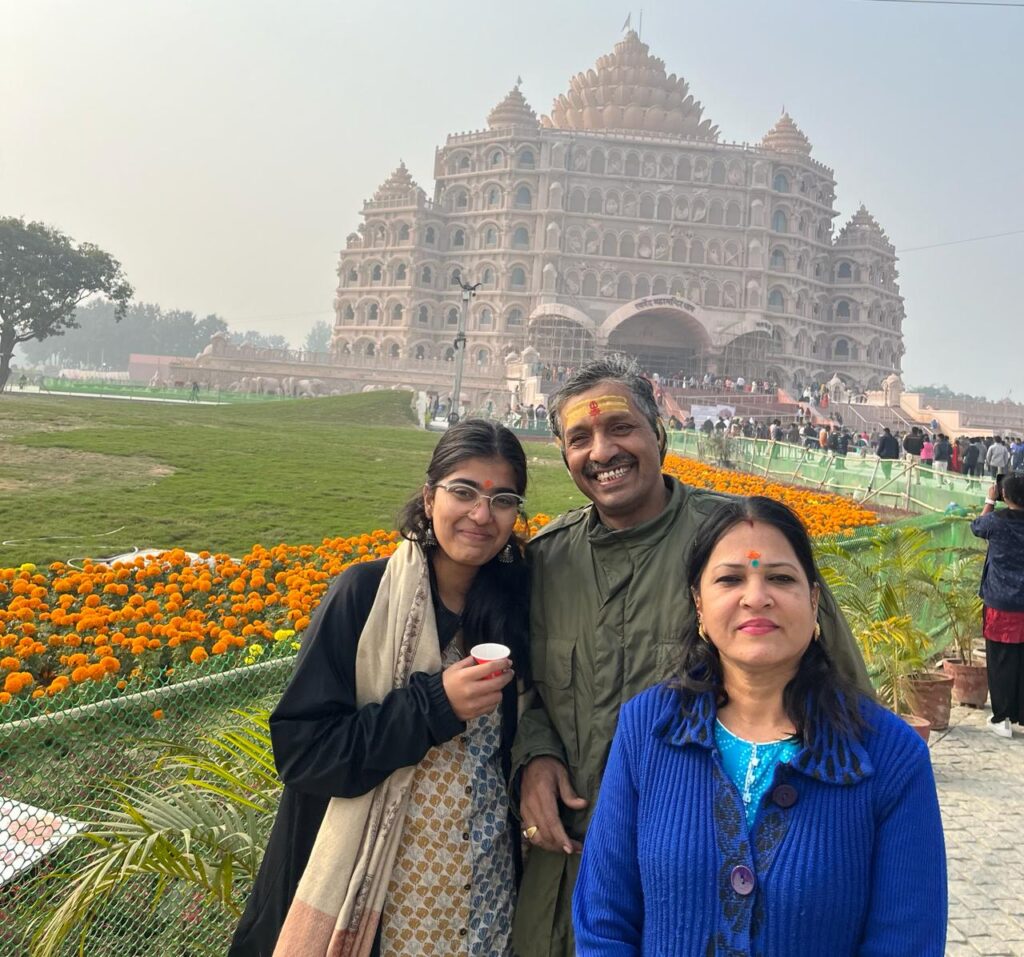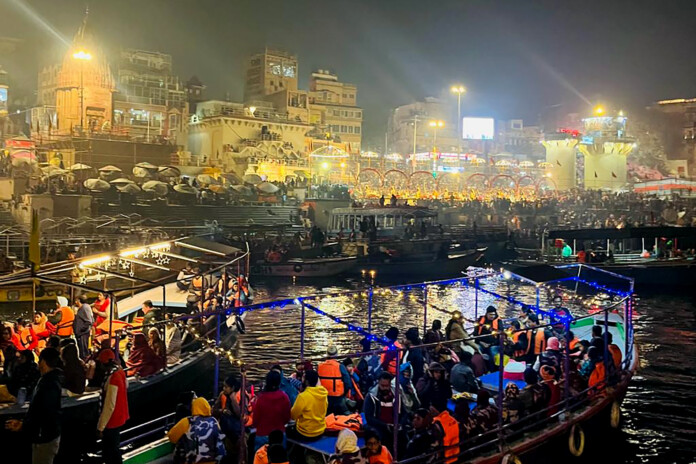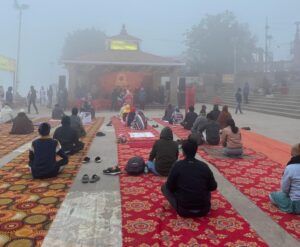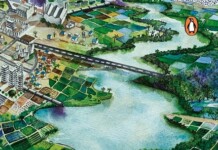When was the last time you truly lived in the present, unguarded and authentic? Are you familiar with the concept of “Allhdpan“? Or, have you ever witnessed people enjoying Lemon Chai near a “Masaan” where the dance of life and eternity intertwines? Have you ever been part of the vibrant tapestry of a city, where every colour, sound, and scent tells a story of life and beyond? Yes, BEYOND!
The word “Alhdpan” cannot be accurately translated, but it roughly means notorious cheerfulness or merriment. “Masaan” means Crematorium or burning bank of the river.
Now, imagine a city that worships every gift that nature has bestowed upon humanity. A place where everyone finds their niche, free from discrimination. A city that revels in simplicity yet possesses profound significance in its essence. A city that grounds every visitor, be it the seasonal Siberian birds or human beings from different walks of life, dead or alive. This is Banaras, also known as Varanasi or Kashi.
Mark Twain wrote: “Banaras is older than history, older than tradition, older even than legend and looks twice as old as all of them put together.“
Banaras is a whole new and distinct world in itself. Many concepts to discuss, and many learnings to embark on. But for today, Let’s pick the one that resonates with me and my readers – An interesting perspective on Banaras’s sustainable living.
The moment my family and I stepped into the ancient city of Banaras, it was as if we had entered a different realm. A realm where the essence of life, spirituality, and the eternal cycle of birth and death coalesce to somewhere that felt like a long sight on the horizon.
There is a reason why I mentioned Mark Twain’s remarks on Banaras. We, the generation we live in, the GENz have a popular opinion on the word “Old”. But when it comes to something as ultimate as the city of Banaras, the opinion has to change, hence the purpose of this story is clear- To change your perspective on the concept of “Ancient” or “Old”.
The people of Banaras may not be familiar with contemporary jargon like ecology, climate change, or sustainability. However, in an intriguing contrast, their daily lives often reflect the principles highlighted in elaborated climate change conferences. In Banaras, traditional practices and deep-rooted respect for nature inadvertently mirror the outcomes that modern environmentalists advocate.
Culinary in Harmony with Nature
The embrace of tradition isn’t just felt in the air; it’s experienced in the very manner food and drinks are presented to you. As I wandered the streets of Banaras, lined with Thelas (roadside eateries), I noticed a beautiful simplicity in how meals were served. Each dish came not in the plastic or disposable containers I was accustomed to, but in Kulhads (clay pots) and cups fashioned from dried leaves. It was here that I first tasted the famous Banarasi meal “Baati Chokha,” gracefully served on a leaf plate, a practice that seemed to be a norm across all roadside stalls in the city. Whenever kulhads or leaf-made vessels were not used, I saw that the eateries preferred steel utensils or paper cups. This wasn’t merely about serving food; it was an invitation into an age-old custom, a journey that connected me to the city’s rich culinary heritage.
Despite the lure of modern, profit-driven alternatives, Banaras remains steadfast in its adherence to these traditional practices. A man who runs a small Thela for evening snacks adds “Interestingly, the locals embrace what is essentially a zero-waste concept, perhaps without a conscious awareness of their significant environmental contribution. This unintentional yet profound contribution to sustainability adds to the charm and authenticity of Banaras.” It’s a beautiful testament to how deeply ingrained and effortlessly environmental consciousness can exist in the fabric of a community.
Compact E-rickshaws Are Superheroes and There’s an Architectural Answer to It
“The Gallis [Narrow Streets] of Banaras are even narrower than one might imagine, twisting and turning in ways that defy expectations. It’s said that the total length of these Gallis stretches to an astonishing 480 kilometres. These lanes are so narrow that barely two people of average size can pass each other”, says a seasoned rickshaw puller.
Navigating the narrow, winding lanes of Banaras, my family and I quickly realized that the grandeur of modern vehicles had no place here. Instead, compact e-rickshaws and traditional human-powered rickshaws became our indispensable allies.
The architectural genius of Banaras, with its tightly packed structures and intricate alleyways, seemed to naturally champion sustainability. Far from being a hindrance, the city’s ancient layout fostered an environment where these smaller, eco-friendly modes of transport don’t just survive, they thrive.
Subah-e-Banaras: Life, Spirituality, and Health
As the first light of dawn creeps over the city of Banaras, I find myself waking up to an experience that is both ancient and profoundly personal. It’s still dark outside, a little past 4 AM, when my day begins, not with the usual jolt of an alarm, but with the anticipation of being part of something truly special—Subah-e-Banaras.
First on the agenda is helping clean the Ganga River. It’s a simple yet profound activity, picking up litter alongside locals and other visitors.
As the sky lightens, I head to Assi Ghat for the Ganga Aarti, a 45-minute ceremony filled with songs, prayers, and fire rituals. It’s a beautiful experience, watching the dedication to the Sun God and River Ganga, feeling part of something bigger than myself.
Following the Aarti, the atmosphere shifts as classical music fills the air. Sitting by the river, I enjoy performances that range from soulful ragas to devotional kirtans, showcasing the musical heritage of Banaras. Whether it’s young talents or established artists playing, the music is always uplifting, adding a serene soundtrack to the morning.
After a 30-minute-long musical performance, it’s time for yoga by the river. Participating in this session, I go through various poses that help me feel more connected to my surroundings. The open-air setting, combined with the gentle morning light and the peaceful environment, enhances the yoga experience, making it a refreshing start to the day.
The final activity is a boat ride on the Ganga, offering a quiet time to reflect and appreciate the beauty of Banaras. It’s a peaceful journey, allowing me to see the city from a different perspective and enjoy a moment of tranquillity before the day fully begins.
By around 7:30 AM, as the program wraps up, I’m left feeling calm and fulfilled. Subah-e-Banaras offers a unique way to start the day, combining environmental care, spiritual rituals, cultural appreciation, and physical wellness into a few hours that leave a lasting impression. It’s a less dramatic but deeply meaningful experience, perfect for anyone looking to engage with Banaras more intimately.
This program sets a precedent for beginning the day with meaningful practices which not only enrich the soul but also set a positive momentum for the day ahead. “A perfect morning at Assi Ghat embodies sustainability in its truest form, emphasizing the protection of our planet while nurturing our well-being, thus creating a balanced and mindful approach to daily life”, says a visitor/journalist from Lucknow.
World’s First Floating CNG Station
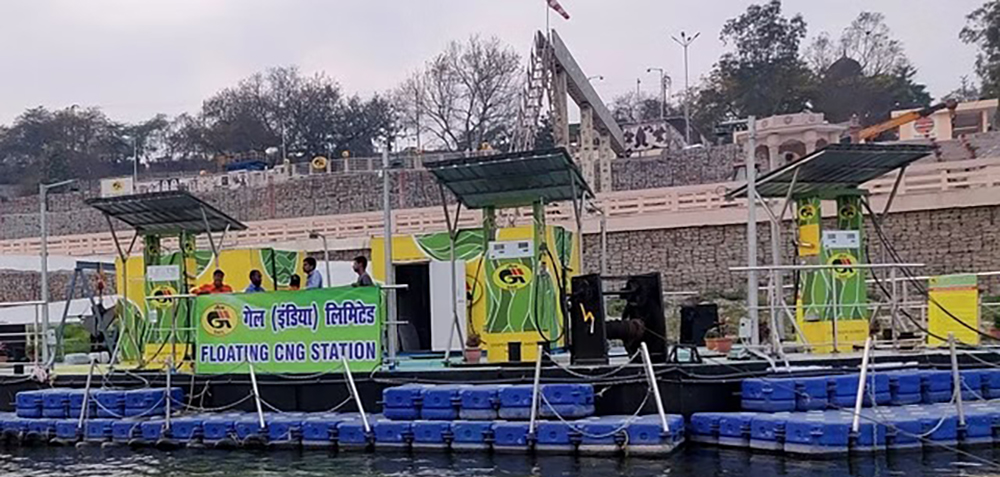
The world’s first floating Compressed Natural Gas (CNG) station, situated at Namo Ghat in Varanasi, represents a significant step towards sustainable and cleaner energy solutions. This groundbreaking project was initiated as a collaborative proposal by Prime Minister Narendra Modi and Uttar Pradesh Chief Minister Yogi Adityanath during 2016-17. The project, aimed at reducing environmental pollution, particularly on the River Ganga, involved setting up a CNG station at Namo Ghat and converting diesel engines in boats to CNG engines. This initiative was driven by the observation of diesel engine-run boats emitting harmful black smoke along the river.
The floating CNG Mother station at Namo Ghat has been operational since December 2021 and has a compression capacity of around 15,000 kg/day of CNG, capable of refuelling approximately 1,000 – 1,500 boats per day. GAIL (Gas Authority of India Limited), a leading public sector undertaking in the natural gas sector, undertook the implementation of this project.
“The implementation of this project by GAIL, a leading public sector undertaking in the natural gas sector, was a game-changer for us boatmen. Previously, the lack of accessible refuelling stations posed a considerable challenge, often hindering our operations and impacting our earnings. However, the Namo Ghat station has since become a lifeline, enabling us to refuel our boats efficiently and continue our services without unnecessary interruptions,” says a boatman. It is estimated that each boatman can save approximately Rs. 36,000 per year by using CNG as fuel. Additionally, CNG engines produce less smoke and are almost odourless, improving the air quality and overall experience for boatmen and tourists.
Community-Led Conversations and Initiatives
I’ve come to deeply appreciate the essence of community engagement that permeates every aspect of life here. With a culture that thrives on dialogue and collaborative problem-solving, the residents are on their way to becoming conscious of their role in societal and environmental matters.
When inquired about how the community participates in Banaras, a hotel proprietor responded, “The city focuses on engaging its residents in major decisions, fostering a communal responsibility for the environment. With projects such as gardens managed by the community, cleanup drives led by volunteers, and educational programs, Banaras is empowering its people to play a crucial role in the city’s path towards sustainability.”
Banaras has seen a surge in environmental conservation efforts, particularly focused on the Ganga River. Local NGOs, such as Ganga Action Parivar, play a pivotal role in organizing clean-up drives. These drives, often held weekly or monthly, attract a diverse group of volunteers, including students, residents, and sometimes tourists. The activities are not just limited to trash removal but also include setting up waste collection points and conducting river water testing to monitor pollution levels.
Additionally, there’s a significant push towards making the ghats more eco-friendly. This involves installing bins made from biodegradable materials, displaying educational signboards, and having volunteers actively engage with visitors to promote cleanliness.
Healthcare awareness in Banaras is marked by a series of community-driven initiatives. Free health camps are a cornerstone of these efforts, offering basic health check-ups, eye examinations, dental care, and sometimes specialized services like diabetes or blood pressure screenings. These camps are often organized in collaboration with local hospitals or health organisations and occasionally receive support from international health bodies.
Banaras is not just a city; it is a living example that old can be gold, where the age-old traditions and collective community efforts lead to a sustainable and fulfilling way of life. It reminds us that sometimes, the answers to our modern-day dilemmas lie in the wisdom of the past and the simplicity of our roots. In embracing the ethos of Banaras, we find a blueprint for a sustainable future that honours our heritage while nurturing our environment and communities.
Upcycling and Recycling Inheritance
I discovered profound, unspoken poetry in the art of upcycling and recycling. The people of Banaras, with their incredible talent, manage to recycle and upcycle without the aid of modern technology or Western knowledge. From old clothes to waste flowers from temples, dried fallen leaves, and even bio waste, nothing goes to waste here. The concept of splurging on clothes or frequent shopping is alien to them.
Phool.co is an innovative company that recycles temple flowers into non-toxic incense sticks, a process they aptly call flower cycling. This technology transforms flower waste into something valuable, aligning perfectly with Phool’s mission to protect the environment and empower local communities by turning waste into wealth.
But the commitment to sustainability doesn’t end there. In Banaras, textile waste is virtually nonexistent. Old clothes are viewed not as items to be discarded, but as opportunities for transformation, thanks to the skill and creativity that abound in this city. These instances showcase the ingenuity and practicality employed for the collective good.
To wrap up our exploration, I leave you with a song that echoes the essence of souls embarking on their eternal quest, leaving an indelible mark on the vibrant, majestic, and richly adorned city of Banaras.
“Kaath ke taale hai
Aankh pe daale hai
Unmein isharon ki chabiyaan laga.
Tu kisi rail si guzarti hai
Main kisi pull sa.. thartharata hoon”
Close translation-
“There are locks of wood,
which you have kept in your eyes,
open them with the keys of signs.
You pass like a train,
I shudder like a bridge.” – Tu Kisi Rail Si Guzarti Hai [Masaan 2015]
Link to the song – https://www.youtube.com/watch?v=zpf8hrbT2d0
